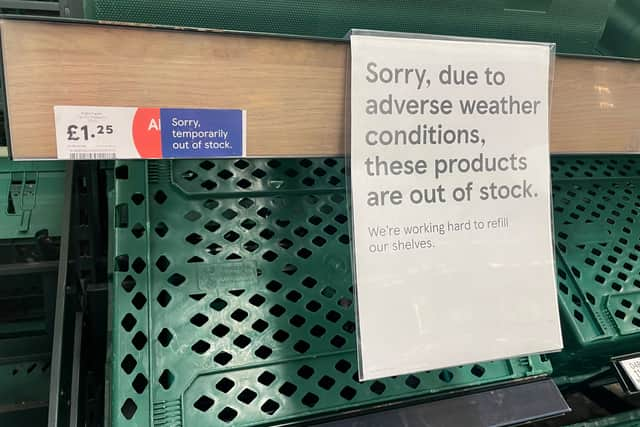Latest inflation figures: Surprise jump in February inflation due to salad shortages, food & booze
This article contains affiliate links. We may earn a small commission on items purchased through this article, but that does not affect our editorial judgement.
and live on Freeview channel 276
The cost of living has unexpectedly increased after three consecutive months of easing Office For National Statistics (ONS) figures show. The rate of inflation has taken a surprise leap driven by a rising cost of alcoholic drinks in pubs and food - and partly a consequence of the recent salad shortage.
The Office for National Statistics (ONS) calculated the consumer prices index (CPI) measure of inflation at 10.4% over the 12 months to February. Inflation, which measures the increase in the price of something over time, jumped to 10.4% in the year to February from 10.1% in January.
Advertisement
Hide AdAdvertisement
Hide AdThe cost of food rose at the fastest rate for 45 years with higher costs for some salads and vegetables in particular. The price rises come after shortages of vegetables were seen in supermarkets at the start of the year.
Tomatoes, peppers and cucumbers were among certain vegetables that were in scarce supply, largely because of extreme weather affecting harvests in Spain and North Africa.
ONS Chief Economist Grant Fitzner said: "Inflation ticked up in February mainly driven by rising alcohol prices in pubs and restaurants following discounting in January.
"Food and non-alcoholic drink prices rose to their highest rate in over 45 years with particular increases for some salad and vegetable items as high energy costs and bad weather across parts of Europe led to shortages and rationing.
Advertisement
Hide AdAdvertisement
Hide Ad"These were partially offset by falls in the cost of motor fuel, where the annual inflation rate has eased for seven consecutive months."


The cost of alcohol in pubs and restaurants also drove inflation to jump last month following discounts in January.
Grant Fitzner, chief economist for the ONS, said higher food prices for February was "no real surprise", but added, "what people hadn’t been expecting is first that we’ve seen an increase in the price of alcohol in pubs and restaurants in February after some discounting".
"We also saw higher clothing prices, particularly for children and women’s clothing," he added.
Advertisement
Hide AdAdvertisement
Hide AdThe Bank of England will closely watch the inflation data ahead of its next interest rate decision on Thursday (March 23).
What does inflation mean
The Bank of England website says the average increase in prices is known as the inflation rate. So if inflation is 3%, it means prices are 3% higher (on average) than they were a year ago. For example, if a loaf of bread cost £1 a year ago and now it’s £1.03 then its price has risen by 3%
Comment Guidelines
National World encourages reader discussion on our stories. User feedback, insights and back-and-forth exchanges add a rich layer of context to reporting. Please review our Community Guidelines before commenting.
